Upsilons in U+U, Prague Regional Meeting '13
Talk:
Regional meeting Prague 14 jun. Attached at the end of post.
Discussion:
Questions and suggestions from Daniel & others.
1. check vertex distribution for individual triggers (is one of them protected? --no)
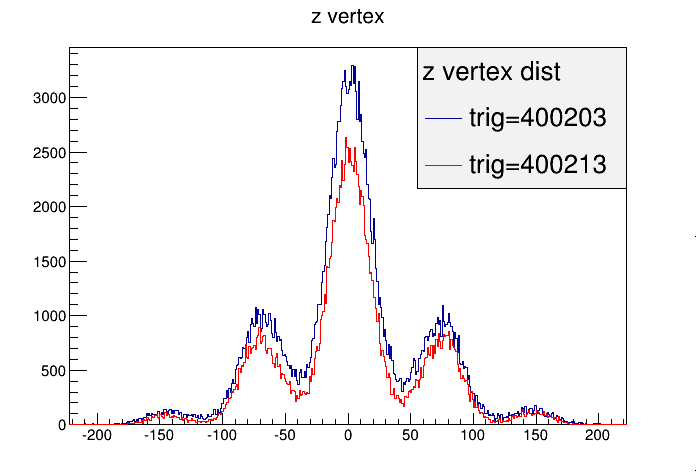
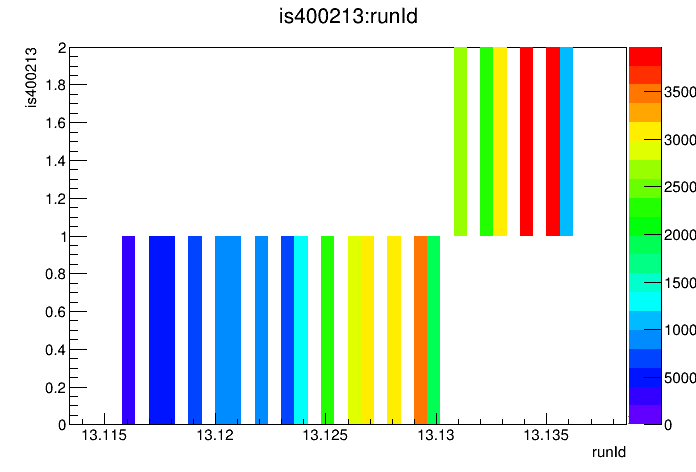
NPE18 before run #13130100 is 400203
NPE18 afterwards is 400213
Vertex distribution is similar
2. plot #candidates per event that could have fired the trigger. how often can there be more than one?
(Question of geometrical assymmetry when different conditions for triggered and paired candidates - is this a non-issue?)
3. E/p purity cut
- for cluster1, why cut out part of "main blob" in E1:p1?
- play aroud with it, maybe individual cut on E1~2.4 to get rid of "side blob". (Why are there hits after ADC>=18 anyway?)

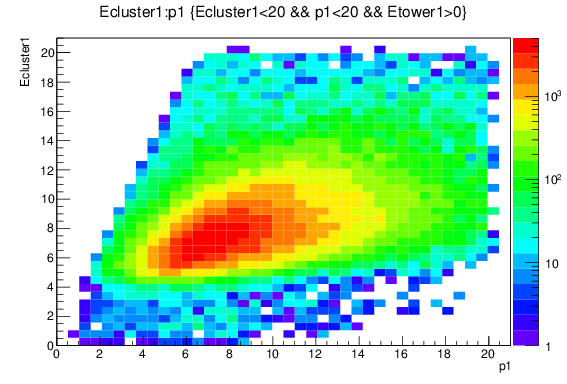
Side-blob is caused by hits with "non-physical" Etower1=-100 , around 7-8% of the hits altogether.
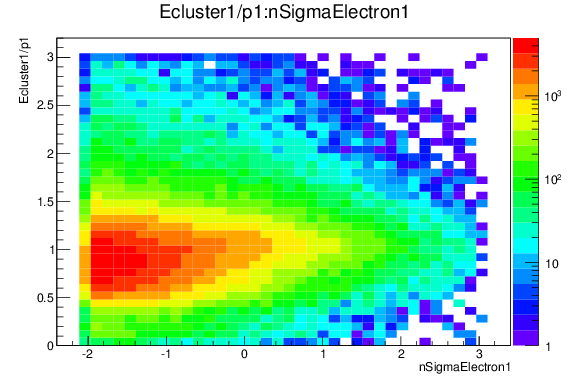

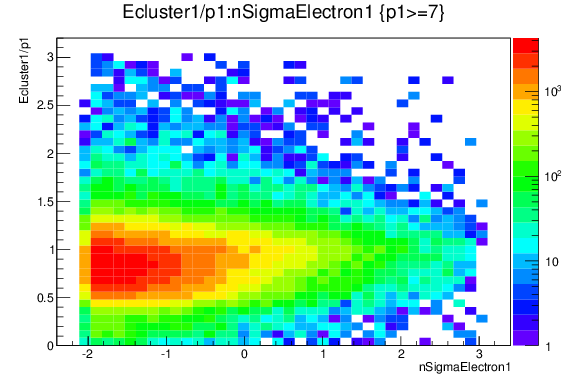
E1/p1 depends on p1 - for low momenta the peak is ~ E1/p1=1, for higher momenta is shifted downwards.
Reason: shower leakage? cluster reconstruction? momentum calibration?
There is no strong correlation of E1/p1 and nSigma1.
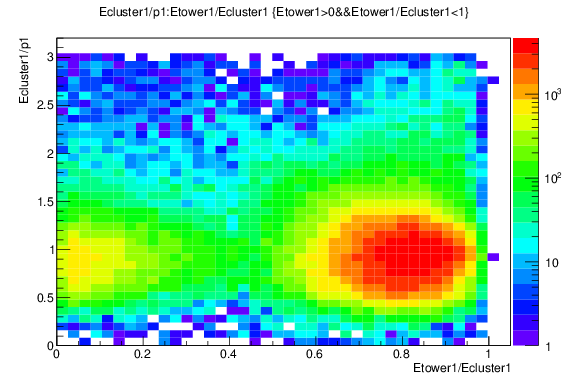

Also no obvious correlation b/w E1/p1 and compactness1. However, zoomed to the peak region, there is some.
4. Compactness (Etower/E) and E/p of 2nd cluster
- what does Etower2 actually imply?
- where does the large amount of low-compactness2 candidates come?

There is some correlation between compactness2 and E2/p2. However, compactness is not peaked at 1. May be edge effect?
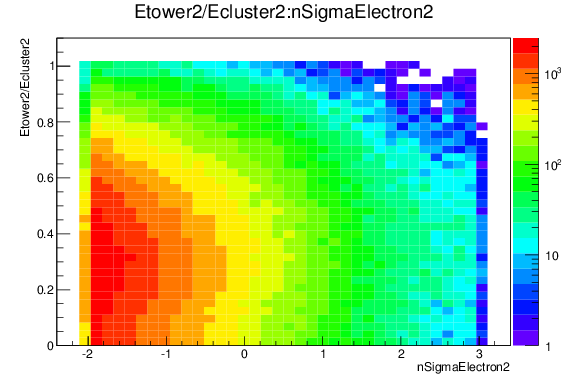
No apparent compactness vs. Sigma2 correlation (but it's hard to tell...)
- apply E/p first (''independent" electron id), then look at compactness
Compactness2 distributions apparently don't change much if we apply E2/p2 cut or E2/p2 and SigmaElectron cuts.
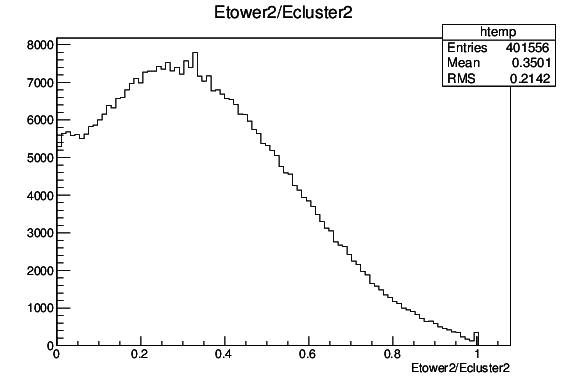 t
t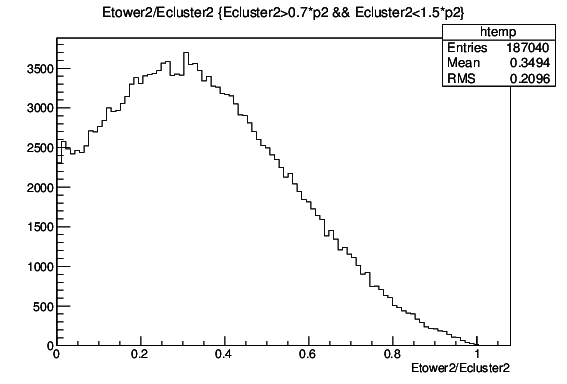
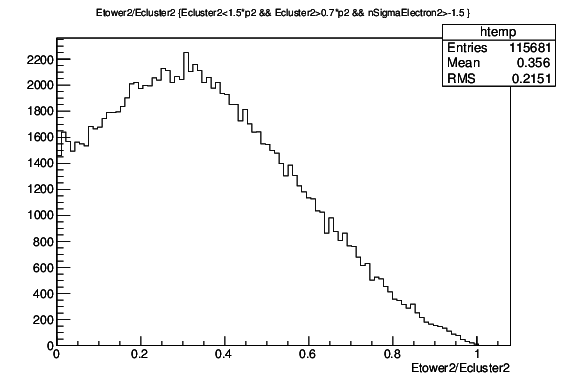
- does compactness2 get rid of much signal? corner-of-tower effect?
Maybe yes. Compactness cut probably gets rid of valid electron candidates too. The upper tests hint it is not a good measure of electronness... probably very low compactness values can be excluded. (0.1-0.2..?)
5. simulate kinematics with Pythia:
- what is the cos(theta) distribution
- look at pT range for daughter electrons, see if one can cut safely
Pythia Simulated pp Upsilon(1S)->e+e- decay
Smearing of momentum dp/p=0.02+pT*0.06
Invariant mass:
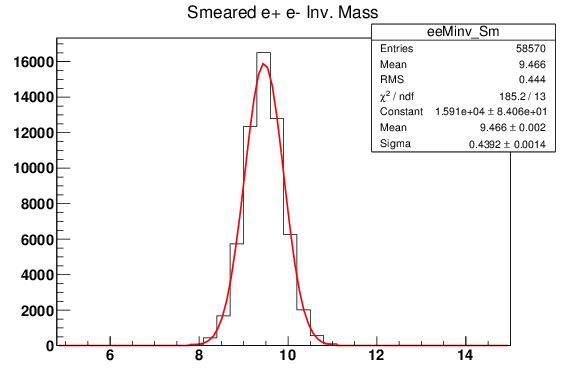
Fit yields sigma~0.47 , that is, momenta are probably over-smeared.
------
cuts checked:
- Acceptance: |y1|<1 && |eta2|<1
- Epair (~p2) >3.0.
- cosTheta < 0.
======
Raw:
Acceptance : (60495/195075)=0.3101110
Epair cut eff.: (58431/60495)=0.9658810
Angle cut eff.: (56630/58431)=0.9691770
======
Smeared:
Acceptance : (60406/195075)=0.3096550
Epair cut eff.: (58127/60406)=0.9622720
Angle cut eff.: (56357/58127)=0.9695490
======
Plots (red=pythia, black=smeared pythia):
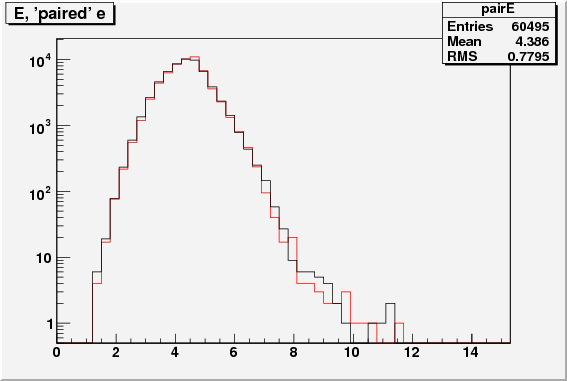
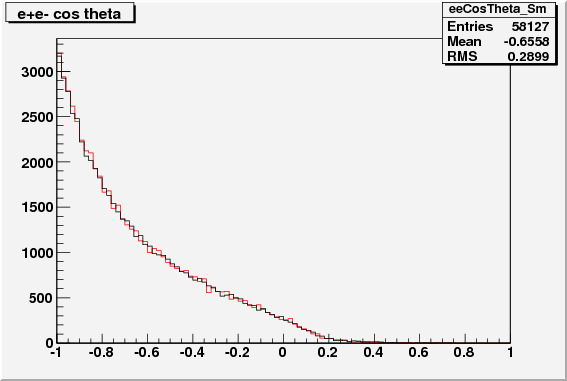
------------------------------------------
DATA
1. ID cuts only on first cluster. Right, also pair p>3 cut
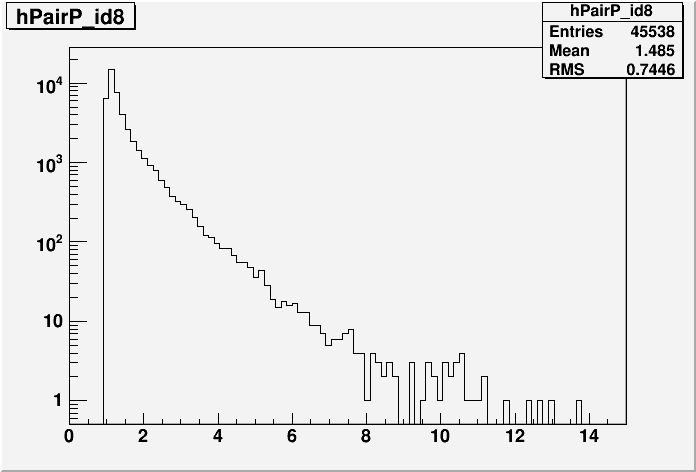


Efficiencies:
Eff_PairP(1clus) = 1965/45538 = 0.04315
Eff_CosTheta(1clus) = 42150/45538 = 0.9256
Eff_CosTheta(1clus + 2nd.mom) = 1590/2357 = 0.6746
1. ID cuts on both clusters. Right, also pair p>3 cut
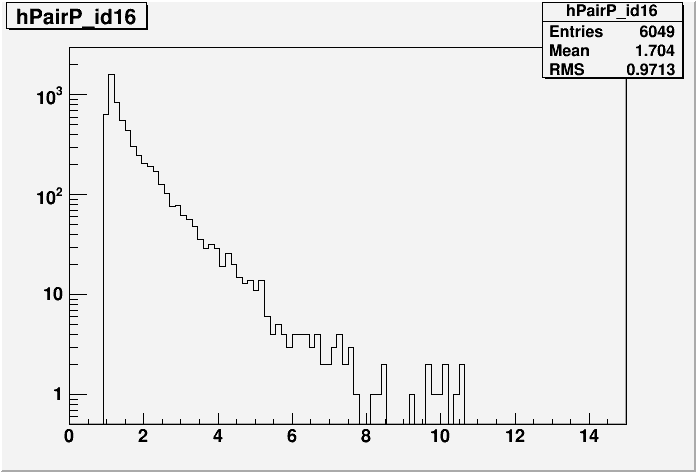
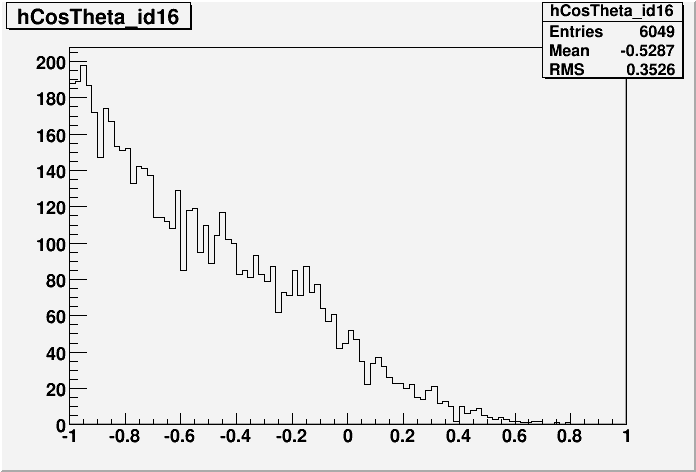
.png)
Efficiencies:
Eff_hPairP(2clus) = 496/6049 = 0.08200
Eff_CosTheta(2clus) = 5506/6049 = 0.9102
Eff_CosTheta(2clus + 2nd.mom) = 374/496 = 0.7540
-------
Conclusion:
Any of these cuts improve significance.
A (paired p) p2>3. GeV/c cut has a dramatic effect in reducing background by 92-96% while the loss of signal is less than 4%. (Question of shape distortion remains.)
An (opening angle) cos_theta > 0. cut has a similar 3-4% loss. The background rejection is smaller than the p2 cut. However, while it is 7-9% if no p2>3 applied, it rises above* 24-30% if p2>3 is applied. Therefore the two cuts are complementary.
* actual rejection is better because signal is included in the sample
6. QA
- #electrons per run, see outliers
- check what Anthony did in Au+Au
- rvertesi's blog
- Login or register to post comments
